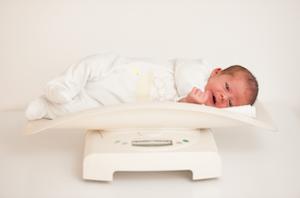Developmental Milestones in The First Year of Life
Babies acquire new physical, mental, and emotional capacities as they grow up. Keeping track of a baby’s progress helps to identify developmental issues as early as possible.
It’s okay if you’re baby hasn’t checked off every milestone by the target age. Every child is different, and many developmental delays improve with time. However, it’s always a good idea to consult a pediatrician if your baby isn’t reaching important milestones.
Babies at risk for developmental problems include those who were born preterm, with low birth weight, or who were exposed to environmental pollutants such as lead. Babies that receive poor nutrition are also at risk for developmental delays.
Failing to hit important milestones can be a sign of a vision or hearing problem. It can also be a sign of an underlying condition, such as autism, muscular dystrophy, Down syndrome, or cerebral palsy. Conditions like cerebral palsy are sometimes the result of a birth injury.
The milestones in this list are primarily taken from the Centers for Disease Control and Prevention and the US Department of Health and Human Service’s MedlinePlus. It includes a variety of motor, emotional, visual, cognitive, and language skills.
Newborn
A newborn baby won’t do much more than eat, cry, and sleep. A newborn’s movements will mostly just be reflexes—grabbing onto a finger, for example. By the time they are a month old, your child may watch you when you hold them or talk to them. They will respond to lights and sounds as well as faces.
2 months
Positive signs
- Smiles at people
- Can raise their head 45 degrees while lying on stomach
- Begins to push up when lying down
- Tries to look at parent, close objects, faces, and moving objects
- Makes cooing and gurgling sounds
- Turns towards sounds, responds to familiar voices
- Gets bored if surroundings don’t change
- Cries up to 3 hours a day
- Sucks on hand to relieve stress
- Soft spot on the back of the head closes up
Warning signs
- Doesn’t respond to loud signs
- Doesn’t smile at people
- Doesn’t watch moving objects
- Can’t hold up head while lying on stomach
4 months
Positive signs
- Weighs twice as much as when they were born
- Head mostly stays upright while sitting
- Head can raise 90 degrees while lying down
- Holds objects placed in their hands, but won’t pick things up
- Put things in their mouth
- Pushes down with legs when held above a hard surface
- Sleeps 9 to 10 hours a night and naps twice during the day
- Cries for attention, responds to attention
- Enjoys playing, reaches for toy with one hand
- Recognizes their parents’ voice and touch
- Knows that a bottle means they are getting fed, show signs of memory
- Laughs, coos, and babbles
- Can see things up close and make eye contact
Warning Signs
- Doesn’t watch moving objects
- Doesn’t smile at people
- Can’t hold up head
- Doesn’t make sounds
- Doesn’t put things in mouth
- Doesn’t push down with legs when placed on a hard surface
- Eyes don’t move in all directions
6 months
Positive Signs
- Can hold almost all their weight in a standing position
- When lying down, can lift their upper body with their arms
- Picks up dropped objects and transfer objects between hands
- Can sit up in chairs
- Teething starts, drools a lot
- Can roll over
- Sleeps for 6 to 8 hours a night
- Responds to emotion and displays emotions
- Is afraid of strangers and recognizes parents
- Imitates sounds and movements
- More able to tell where sounds are coming from
- “Talks” to mirrors and toys
Warning signs
- Still hasn’t doubled their birth weight
- Isn’t affectionate towards parents or caregivers
- Doesn’t make vowel sounds, like “eh” or “ah”
- Doesn’t respond to sounds
- Doesn’t roll over
- Doesn’t laugh or squeal
- Is stiff or floppy
9 months
Positive signs
- Crawls, sits up without support, and stands while holding a parent’s hand
- Feeds self
- Has favorite toys
- Reaches for objects, bangs objects together, throws and shakes objects, pinches objects between thumb and forefinger
- Babbles, imitates language
- Doesn’t like being separated from parents
- Understands that objects still exist even when out of sight
- Responds to name, simple commands, “no,” and games like “peek-a-boo”
Warning signs
- Doesn’t support weight on feet
- Doesn’t babble
- Can’t sit up
- Doesn’t respond to their name or recognize familiar people
- Doesn’t look where you point
- Can’t pass things they’re holding from one hand to the other
12 months
Positive signs
- Can sit, stand, and sometimes walk without support
- Is three times their birth weight and twice their birth length
- Can say a few words, such as mama or dada
- Begins to pretend and explore
- Connects objects with their names
- Helps parent dress them by raising an arm, etc.
- Imitates sounds, language, and gestures
- Responds to simple requests
- Cries when parents leave, crave attention
Warning signs
- Doesn’t crawl or stand
- Doesn’t use simple, single words
- Doesn’t use gestures like pointing or waving
- Loses skills they already had at an earlier age
